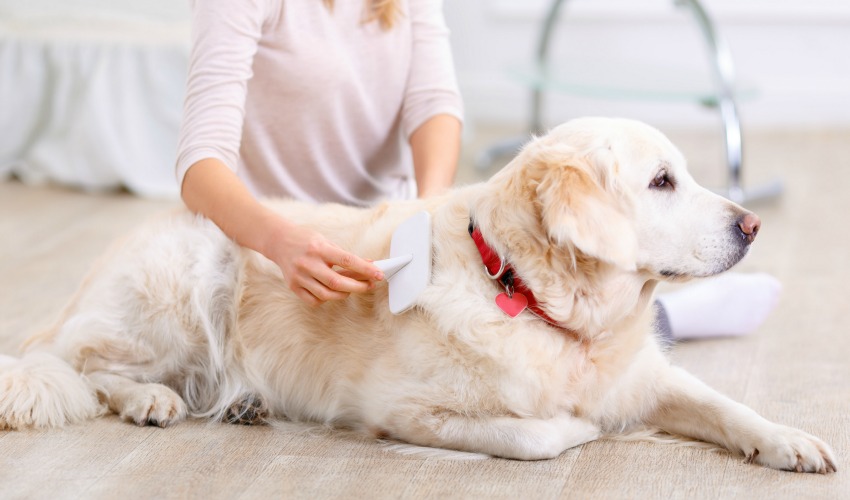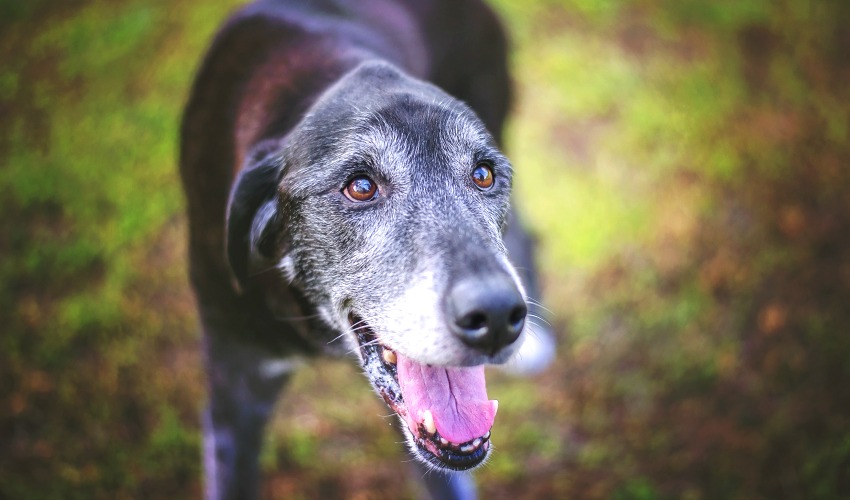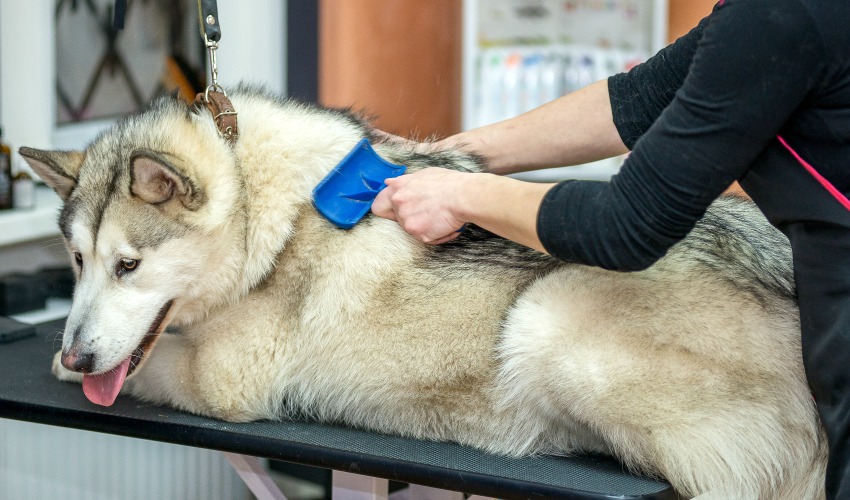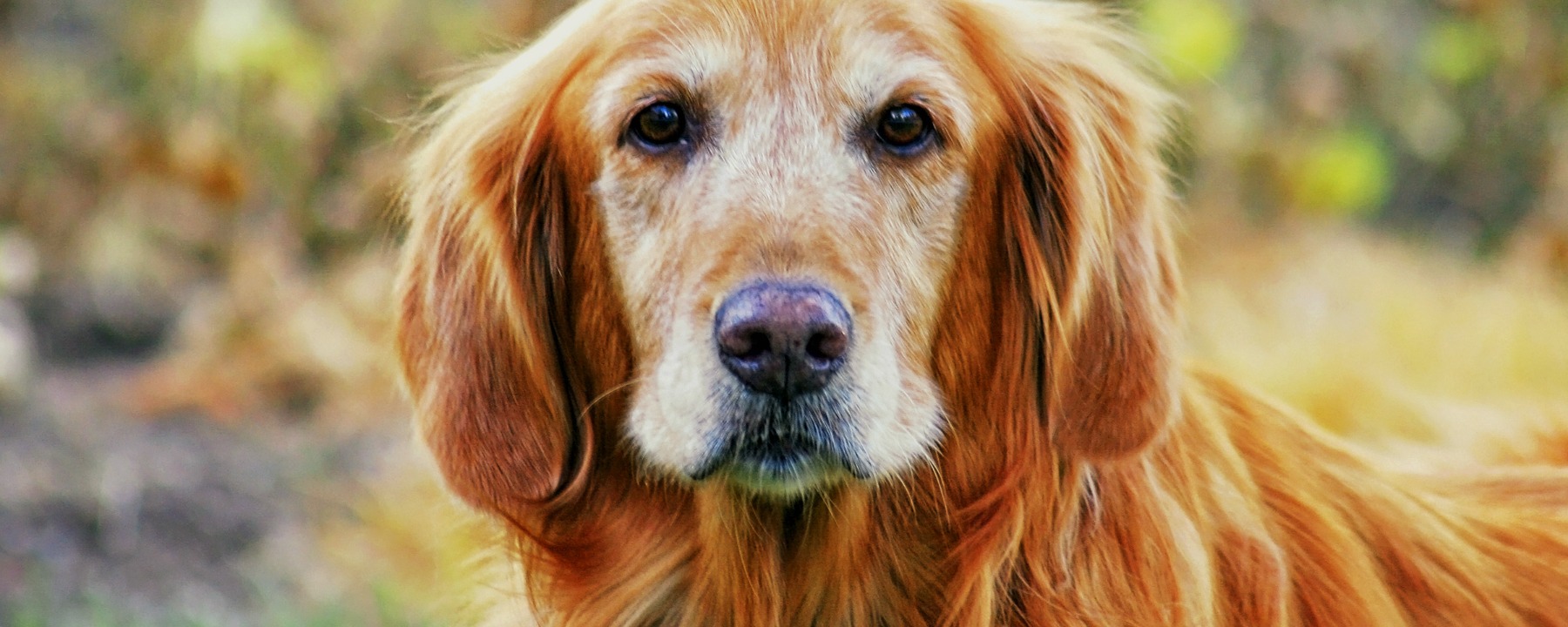Professional dog groomers work with every type of pup, so it’s important for your training to cover all ages and breeds. Working with an older dog can be tricky because you have to take each dog’s needs and ailments into consideration. Being gentle and attentive is the key to a successful grooming appointment – but what else do you need to know when grooming a senior dog?
Follow these essential tips for grooming older dogs and your clients will be thrilled by your knowledge and skill!

Less standing
For senior dogs (dogs in the last quarter of their lives) you should groom logically. This means you need to have an idea of where you’ll start and how you’ll proceed depending on each dog’s needs. Older dogs need their rest, and usually don’t have as much muscle and stability as they used to. So be sure to take breaks during a grooming appointment – let your furry friend rest his legs and muscles.
A great tip for grooming older dogs: start under the belly and work your way up. This allows the dog to lie down or sit while you groom the rest of his fur. You can also support the dog with your arms or recruit an assistant to help keep the dog comfortable.
Make quick work
An important lesson for grooming senior pups is to prioritize wellbeing over vanity. Basically, a dog’s comfort always comes first. So if you find an older dog is unable to handle a full grooming appointment, shorten it up and stop if you see any signs of discomfort. The last thing an older dog needs is muscle or joint pain, or any added stress. Let the dog’s body language and temperament guide you in gauging how much they can stand. Better to do a quick trim than to cause any pain or anxiety.

Be practical
Think about how an older dog lives their life – they probably aren’t as active as they once were, and they have more risk of injury. Speak to the owner, and take your studies of age and breeds into consideration. For example, for a dog with trouble standing or walking for long periods, you should pay attention to their paw pads. Trimming away excess fur could give them better traction on the floor. As well, be sure to trim a dog’s nails if he doesn’t get outside as much anymore. There are plenty of easy fixes for certain issues – again, you’ll want to speak to the owner to find out every dog’s individual struggle!
Be gentle
Practice light brushing to keep an older dog stable and comfortable. Just as in humans, a dog’s skin can become more sensitive as he gets older. Choose your brush carefully and use slow brushing movements that will relax your furry clients. Plus, knowing about a dog’s ailments will help you avoid any grooming problems. Learn about the sensitive areas of an older dog and don’t risk adding more discomfort. Your job as the groomer is to do as much upkeep as possible without causing any harm. Senior dogs need to feel calm, so this should be your main priority!

Don’t risk it
Knowing when to say “no” as a groomer will add reliability to your expertise. Although some clients may not understand the risks associated with grooming an older dog, they should still be reasonable enough to know that you’re the expert. Never risk your credibility as a groomer. If a dog is ill (even if it’s a younger dog) or has an injury of some sort, you should not groom him if you foresee an issue arising.
More than this, you’ll need to know when to stop a groom if an older dog becomes intolerant. He may lose the strength to stand, or become irritable with you. Either way, you should know the signs of an uncomfortable dog. This is just another reason to work quickly and carefully with senior dogs – keeping an eye out for him will keep both you and the dog safe.
Ready to start your career? Find out exactly what you’ll learn on your way to becoming a professional dog groomer!



